 by our College Data Analytics Team
by our College Data Analytics TeamFlorida Institute of Technology - Online total enrollment is approximately 1,703 students. 651 are undergraduates and 11 are graduate students.
Male/Female Breakdown of Undergraduates
The full-time Florida Institute of Technology - Online undergraduate population is made up of 61% women, and 39% men.
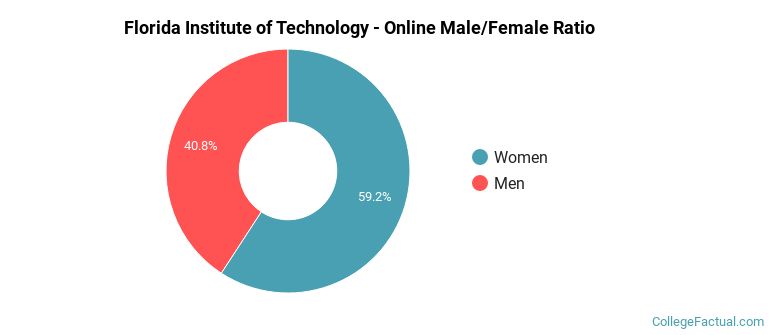
For the gender breakdown for all students, go here.
Florida Institute of Technology - Online Racial/Ethnic Breakdown of Undergraduates
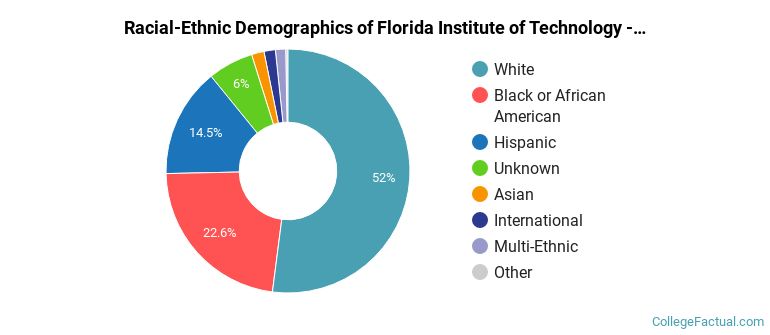
| Race/Ethnicity | Number |
|---|---|
| White | 328 |
| Black or African American | 135 |
| Hispanic | 115 |
| Unknown | 38 |
| International | 12 |
| Asian | 10 |
| Multi-Ethnic | 10 |
| Native Hawaiian or Pacific Islander | 1 |
See racial/ethnic breakdown for all students.
Male/Female Breakdown of Graduate Students
About 45% of full-time grad students are women, and 55% men.

For the gender breakdown for all students, go here.
Florida Institute of Technology - Online Racial-Ethnic Breakdown of Graduate Students
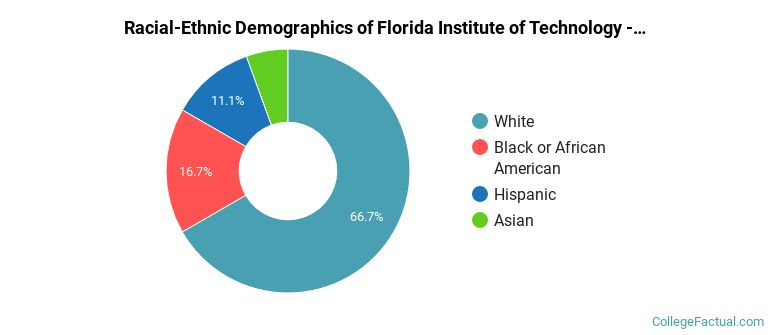
| Race/Ethnicity | Number |
|---|---|
| Unknown | 4 |
| Black or African American | 2 |
| Hispanic | 2 |
| White | 2 |
| Asian | 1 |
| Native Hawaiian or Pacific Islander | 0 |
| International | 0 |
| Multi-Ethnic | 0 |
See racial/ethnic breakdown for all students.
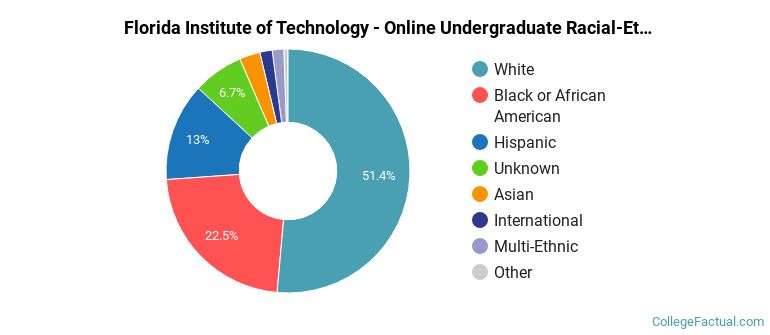
| Race/Ethnicity | Number |
|---|---|
| White | 840 |
| Black or African American | 335 |
| Hispanic | 260 |
| Unknown | 136 |
| Asian | 60 |
| International | 33 |
| Multi-Ethnic | 22 |
| Native Hawaiian or Pacific Islander | 6 |
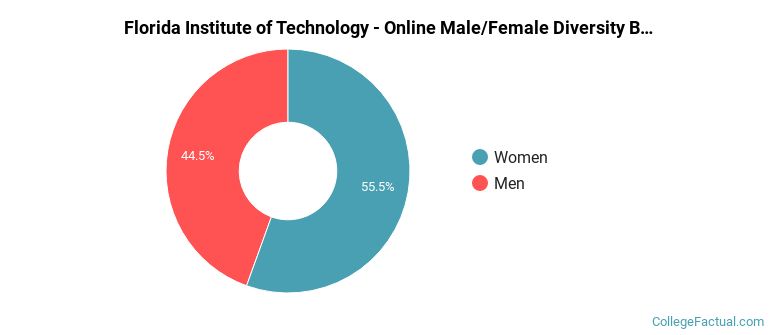
There are approximately 950 female students and 753 male students at Florida Institute of Technology - Online.
Learn more about international students at Florida Institute of Technology - Online.
A traditional college student is defined as being between the ages of 18-21. At Florida Institute of Technology - Online, 4.10% of students fall into that category, compared to the national average of 60%.
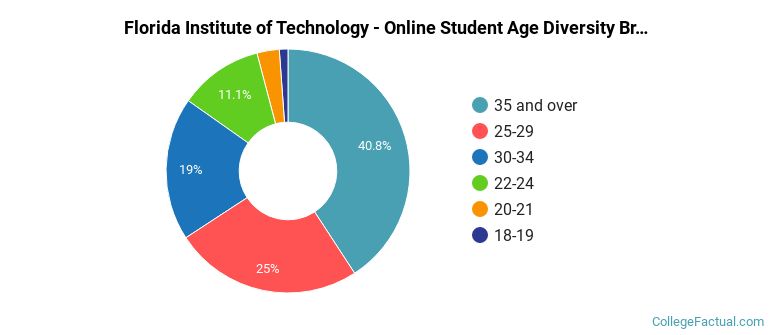
| Student Age Group | Amount |
|---|---|
| 35 and over | 1,034 |
| 25-29 | 633 |
| 30-34 | 481 |
| 22-24 | 282 |
| 20-21 | 75 |
| 18-19 | 29 |
| Under 18 | 0 |
Footnotes
*The racial-ethnic minorities count is calculated by taking the total number of students and subtracting white students, international students, and students whose race/ethnicity was unknown. This number is then divided by the total number of students at the school to obtain the racial-ethnic minorities percentage.
References
Department of Homeland Security Citizenship and Immigration Services
Read College Factual's Diversity Ranking Methodology.